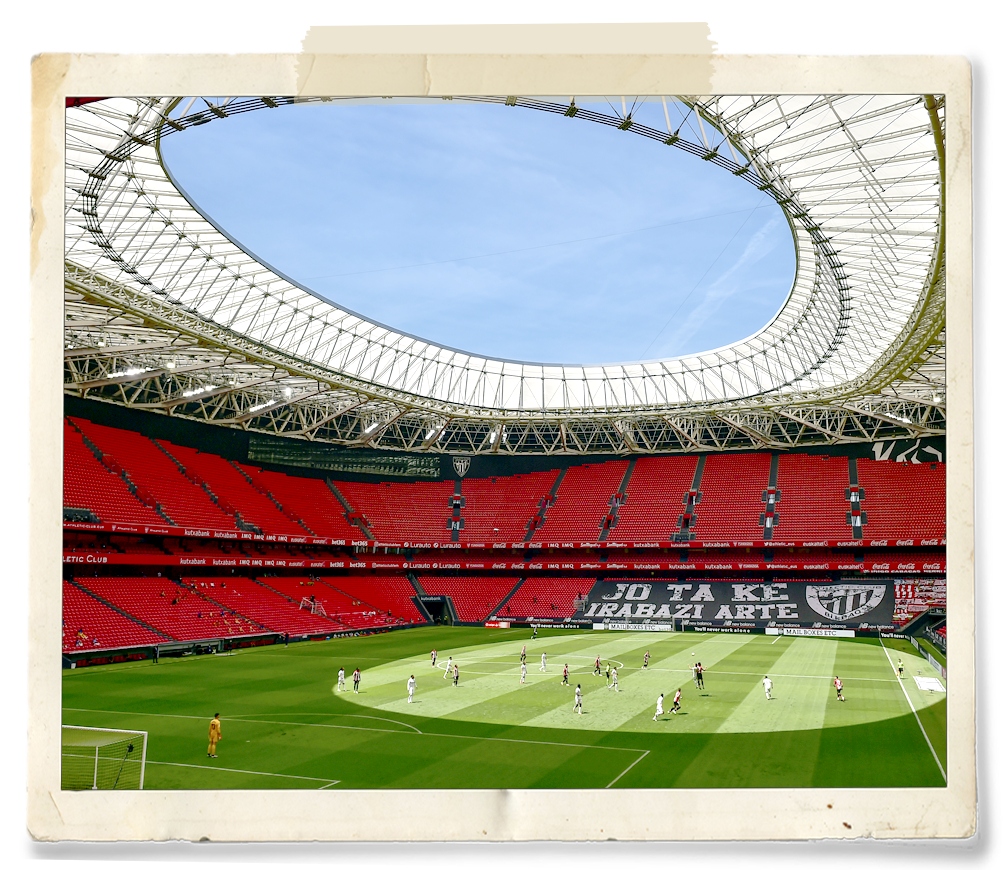A world of sport without spectators
Stadiums have fallen quiet, the seats empty. There are no baying crowds and no paying spectators. The whack of the ball is the only sound that resonates in the arena.

Photo credit: AP
Athletic Club (better known as Athletic Bilbao) and Real Madrid play during their La Liga football match at the San Manes stadium, which is nearly empty, in Bilbao, Spain, on July 5, 2020.
Sport makes the world go around. So it was no surprise that many sporting events were quick to resume the seasons once the coronavirus threat receded. Spectators may be missing, but the show must go on.
Golf was among the first to get into the thick of action with Tiger Woods and Peyton Manning defeating Phil Mickelson and Tom Brady in a charity golf match in Florida on May 24.
Football without spectators is boring. The din of whistling and the chanting is what revs up the stadiums. Even recorded noise wouldn’t help. But the football leagues in Europe had no option, but to complete the seasons without the paying public.
The English Premier League resumed on June 17 in front of empty stadiums, and the FA Cup final on August 1 brought down the curtains to the season in England. The Bundesliga in Germany, Italy’s Serie A and La Liga in Spain all managed to conclude their seasons belatedly. Only France’s Ligue 1 of Europe’s elite leagues curtailed their competition. Uefa’s flagship events, the Champions League and Europa League crowned its champions in Lisbon and Germany.
Tennis and Novak Djokovic were in the news for the wrong reasons. The world number one’s efforts to kick off tennis after the virus outbreak turned out to be a fiasco. Djokovic, his wife Jelena and three other players –– Grigor Dimitrov, Borna Coric and Viktor Troicki –– tested positive for COVID-19 after the Adria Tour exhibition tournament in Serbia and Croatia.
The US Open became the second grand slam of the year after French Open was delayed and Wimbledon scrapped. The US Open was played in a New York ‘bio-bubble’, without spectators and with strict safety protocols. But defending champion Rafael Nadal opted out after deciding to ride out the pandemic in the safety of his home, but returned to Paris to win the French Open in September for his 20th Grand Slam title.
Cricket stops for 116 days
After a 116-day interval, the longest gap between matches in 37 years, international cricket resumed with the West Indies series in England. The England and Wales Cricket Board went to great lengths to create bio-bubbles to keep out the virus. Following that success, Pakistan Australia toured England. The Australians hosted India, and Pakistan toured New Zealand. India’s T20 showpiece, the Indian Premier League, was relocated to the bio-secure environment of the UAE in September 19.Badminton season was to get underway with the Thomas and Uber Cup in Aarhus, Denmark. It was been rescheduled twice and no new date has been set. A new calendar has been put in place, and that pushes the 2021 World Championships from August to November to avoid clashing with the rescheduled Tokyo Olympics.
Motorsport returned to the starting grid after an enforced break. Formula One commenced its delayed season in Austria early July without spectators and finished in Abu Dhabi in December with Lewis Hamilton of Britain driving away with the championship. NASCAR, MotoGP and IndyCar got their shows on the road after delays, but all of them has to do it without the cheering spectators.
The NBA’s Board of Governors approved a plan to restart the season from July 31, at Walt Disney World in Orlando, Florida. To protect the players, the NBA invested $170 million to create an isolation zone, called the NBA Bubble or Disney Bubble, and that helped finish the final eight games of the 2019–20 regular season and the 2020 NBA playoffs.
In the time of COVID-19, sport has become a world without spectators. Only a corona-free world will bring the people back to the stadiums.